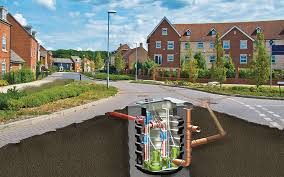In the framework organization of any cutting-edge city, sewer frameworks assume an essential yet frequently ignored part. Among the different parts of a sewer framework, pump stations are especially basic, particularly in regions like Kent where geological difficulties might frustrate the progression of wastewater.
What is a Pump Station Sewer?
A pump station sewer, otherwise called a lift station, is a fundamental piece of a wastewater assortment framework. It’s intended to lift sewage from a lower to a higher rise, where gravity can then dominate and convey the sewage further along the pipeline. In regions like Kent, where the landscape isn’t consistently level, pump stations become important to guarantee the nonstop progression of wastewater to treatment offices.
Significance of Pump Station Sewers in Kent
Kent, in the same way as other urban areas, faces topographical difficulties, for example, changing rises and regular impediments like slopes or valleys. In such regions, depending entirely on gravity-took care of sewer frameworks may not be achievable. Pump station sewers offer an answer by pumping sewage through pipes, defeating height contrasts, and guaranteeing proficient vehicles to treatment plants. Without pump stations, sewage reinforcements and spills over could happen, prompting ecological contamination and general well-being risks.
Parts of a Pump Station Sewer
An ordinary pump station sewer in Kent comprises a few key parts:
Wet Well: Here sewage gathers before being pumped out. The size of the wet well relies upon variables, for example, the stream rate and pinnacle interest.
Pumps: These are the core of the pump station. Submarine pumps are regularly utilized as they can work productively in any event, when lowered in sewage.
Control Board: The control board houses the electrical parts that direct the activity of the pumps. It screens water levels in the wet well and actuates the pumps on a case-by-case basis.
Force Fundamental: This is the line that conveys the pumped sewage from the pump station to the treatment office. It’s compressed to beat the rise distinction between the pump station and the treatment plant.
The activity of Pump Station Sewers
The activity of a pump station sewer is moderately direct. As sewage streams into the wet well, the water level ascents. Sensors in the wet well trigger the pumps to begin when the sewage arrives at a specific level. The pumps then, at that point, lift the sewage through the power principal until it arrives at the treatment office. When the water level in the wet well reduces to a preset level, the pumps consequently shut off.
Support and Upkeep
Standard upkeep is fundamental to guarantee the smooth activity of pump station sewers. Some support errands include:
Pump Examinations: Standard investigations of pumps are important to check for indications of mileage and to guarantee they are working ideally.
Wet Well Cleaning: Occasional cleaning of the wet well forestalls the aggregation of flotsam jetsam and dregs, which can obstruct the progression of sewage.
Electrical Framework Checks: Reviewing the control board and electrical parts distinguishes any issues that might influence the activity of the pump station.
Crisis Readiness: Having an emergency course of action for blackouts or pump disappointments is essential to forestall sewage reinforcements and spill over.
Ecological and General Wellbeing Effect
Appropriately working pump station sewers are imperative for defending the climate and general well-being. By proficiently moving sewage to treatment plants, pump stations assist with forestalling contamination of water bodies and decrease the gamble of waterborne sicknesses. Moreover, they limit the potential for sewage reinforcements, which can harm property and pose wellbeing risks to occupants.
Conclusion
In conclusion, pump station sewers assume an essential part in overseeing wastewater in regions with testing territories like Kent. Grasping their significance, parts, activity, and upkeep is vital to guaranteeing productive and dependable sewage transport. By putting resources into the upkeep and extension of pump station sewers, urban communities can relieve ecological dangers and defend general well-being for a long time into the future.
FAQs:
Q: Why are pump station sewers fundamental in Kent?
A: Pump station sewers are fundamental in Kent because of its different landscape, guaranteeing the nonstop progression of wastewater to treatment offices.
Q: What support errands are expected for pump station sewers?
A: Upkeep undertakings incorporate customary pump examinations, wet well cleaning, and checks of the electrical framework to guarantee ideal activity.
Q: How in all actuality do pump station sewers benefit the climate and general well-being?
A: Pump station sewers assist with forestalling contamination of water bodies, lessen the gamble of waterborne illnesses, and limit sewage reinforcements, safeguarding both the climate and general well-being.
